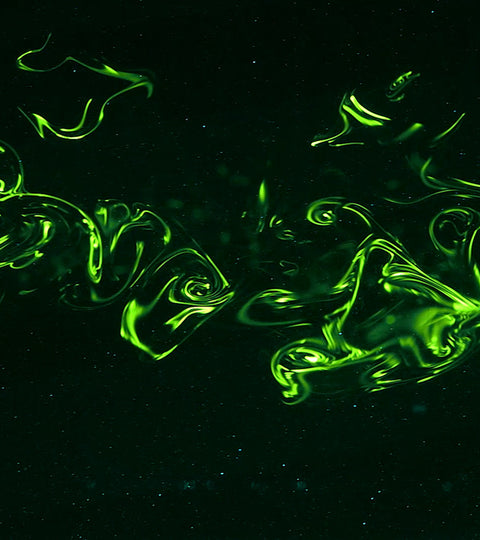Scientists are discovering more about normal human biology every day. Case in point: the sense of smell, which everyone utilizes constantly, but few understand in depth. PBS NewsHour science producer Nsikan Akpan takes a look at how smells work, how they move and how every sniff we take changes the odor itself in an interview with University of Colorado at Boulder's John Crimaldi.
NSIKAN AKPAN: Whoa. What’s that? It looks like a space alien puked. Can you guess what it is? That is an odor, or at least what an odor looks like. Odors are normally invisible, swirling around us. But I will tell you the secret behind why you can see this one. Hey there. My name is Nsikan Akpan, and you have landed upon the first episode of “ScienceScope.” Here, we will put science itself under a microscope, showing you how amazing discoveries are made and the people behind them. First up, these trippy-looking waves. This smell-scape is brought to you by high-powered lasers, a gigantic tank of water and this guy.
JOHN CRIMALDI: You can learn more about this problem from sitting and looking at something like this than just anything else.
NSIKAN AKPAN: That’s John Crimaldi, an engineer and fluid mechanist at the University of Colorado, Boulder. His lab studies how smells move through space. Do they drift like clouds or curl like smoke, or do smells have another shape altogether? The answers will lay the foundation for a nationwide project that is studying how animals and humans use smells to map their surroundings.
JOHN CRIMALDI: If we have situations where we want to detect, say, a location of a chemical weapon, or if we want to try and find hidden contraband, or if we want to find somebody that’s trapped under the snow in an avalanche, the tools we use in the 21st century to do this are animals.
NSIKAN AKPAN: Or people. And that puts both at tremendous risk. Crimaldi and his colleagues want to outsource this risk to robots by teaching them how to smell. That sounds pretty wild, I know. But think about it. We have machines to replace our other senses, such as cameras with facial recognition or implants to restore our hearing, but we don’t have similar technology for smell. Step one is learning how air carries odor into our noses. Air isn’t static, as you might think. It’s turbulent, like a river.
JOHN CRIMALDI: One of the ways of thinking about turbulence is, it’s a collection of rotating pieces of fluid that people often called eddies. And there’s bigger eddies. And inside those eddies are smaller eddies. But point is, is that flow is structured. It’s not — it has an element of randomness, but it has a high degree of structure.
NSIKAN AKPAN: Smells are tiny chemical molecules that get swept around by turbulent air. But these odors can also travel underwater, where creatures like fish and hermit crabs can smell them, too.
JOHN CRIMALDI: And it turns out that the physics of flows in air and flows in water are exactly the same.
NSIKAN AKPAN: So, Crimaldi’s team measures these odors underwater. They start by pumping 5,000 gallons of water through a 50-foot-long tank. Next, they spread laser light into a sheet that slices through the water, and then finally comes the dye.
JOHN CRIMALDI: And so what we’re doing is, we’re using a special kind of dye as a surrogate for the odor. And this dye has exactly the same types of properties that an odor would have if it were in this flow, but it has a special property that, if we shine a laser light on it, then it’s fluorescent.
NSIKAN AKPAN: What they find is, odor moves like taffy. It’s constantly being pulled and stretched into thin filaments. If you have ever caught a whiff of a bakery when you walk down the street, you have picked up a filament. In some areas, odors get dragged away, leaving a blank space. This blank space is called intermittency. Small disturbances like a quick sniff are the tugs in the smelly tug of war. Here’s a demonstration built by Crimaldi’s team. A tube is standing in for an animal’s nostril. So, now breathe in. Now exhale. And you create an olfactory cyclone that changes want structure of the odor plume. So whenever you’re in a garden and you stop to smell the roses, just remember that every sniff you make is changing the aroma for someone else. I’m Nsikan Akpan, and this is “ScienceScope” for the “PBS NewsHour.”
Source: PBS

